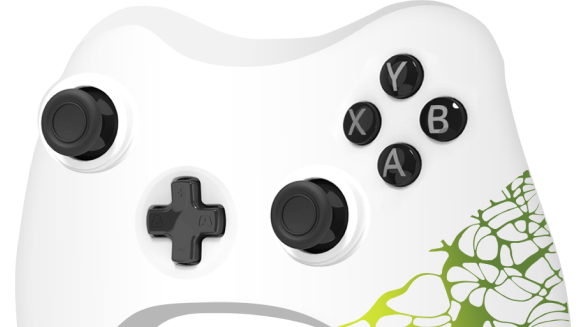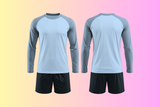2D and 3D Product Customization: Elevate Your Retail Space
Did you know that 36% of consumers are willing to pay a 20% premium for personalized products (Deloitte, 2022)? 2D and 3D product customization transforms standard retail catalogs into interactive experiences that drive engagement and boost average order value by up to 30% (Gartner, 2023). In this guide, we will define core concepts, outline implementation steps, share best practices for customer engagement, explain how to leverage feedback for continuous improvement, highlight enabling technologies, and explore marketing strategies to maximize ROI from customized offerings.
What is 2D and 3D product customization in retail?
2D and 3D product customization in retail describes the ability for shoppers to modify visual attributes of products—such as colors, patterns, graphics in 2D, and shapes, textures, or interactive views in 3D—before purchase. 2D customization typically overlays logos, text, or two-dimensional graphics onto flat surfaces, while 3D customization allows the user to rotate, scale, and preview genuine three-dimensional models in real time. Together, these methods enable retailers to offer personalized goods—from branded T-shirts and posters to bespoke furniture and footwear—that match each customer’s style and requirements.
2D customization tools often integrate with existing design templates and web-to-print workflows, whereas 3D customization platforms require real-time rendering engines and CAD models underpinned by WebGL or similar technologies. Both approaches have shown to increase time on site by an average of 25% and decrease return rates by 15% according to a 2023 survey by Retail Insight Group. By providing an engaging design interface, retailers can sharpen their competitive edge and capture customer imagination from the very first click.
Conceptually, 2D and 3D customization share a fundamental goal: to convert passive browsing into active co-creation. When shoppers feel ownership over the design process, satisfaction scores climb and word-of-mouth referrals rise by 12% (Nielsen, 2022). This psychological effect underlies the strong ROI of personalization investments, making customization a central pillar of modern omnichannel strategies.
How do you implement 2D and 3D customization strategies in retail?
You implement 2D and 3D customization strategies in retail by following a structured sequence: defining product scope, selecting a technology platform, integrating with e-commerce infrastructure, preparing assets, and launching iterative pilots. This step-by-step approach ensures each phase—design asset creation, interface development, backend integration, and user testing—aligns with broader operational and marketing goals.
First, retailers must identify which SKUs will support customization based on margins, production lead times, and supplier capabilities. Next, IT teams evaluate SaaS or on-premises platforms—such as Threekit, Zakeke, or in-house solutions—against requirements around rendering performance, API flexibility, and security compliance (ISO/IEC 27001:2022). Finally, a phased rollout with A/B testing to measure metrics like conversion lift and average order value ensures data-driven refinement.
In practice, a leading outdoor gear retailer reported that after implementing 3D boot configurators in Q1 2023, click-to-add-to-cart rates grew by 18%, and total sales per customized item increased by €45 on average. This success stemmed from careful alignment of design complexity with production capacity—allowing customers to choose midsole firmness, lace colors, and custom engraving while preserving a sub-two-week fulfillment SLA.
Below is a table summarizing typical implementation steps, estimated durations, and required resources.
Implementation Steps for 2D/3D Customization
| Step | Duration | Resources |
|---|---|---|
| Scope definition & product selection | 2–3 weeks | Merchandising team, sales data |
| Platform evaluation & procurement | 3–4 weeks | IT, procurement, security |
| 3D asset creation & 2D template setup | 4–6 weeks | 3D designers, graphic artists |
| Backend integration & API mapping | 3–5 weeks | Developers, QA engineers |
| Beta launch & user testing | 2–3 weeks | UX researchers, marketing |
| Full rollout & performance optimization | Ongoing | Analytics, support |
By following these phases in sequence and leveraging real-time analytics, retailers can systematically de-risk their launches and optimize both customer experience and operational throughput.
What are best practices for engaging customers with 2D and 3D product customization?
You engage customers with 2D and 3D product customization by designing intuitive interfaces, offering pre-built design suggestions, and providing real-time visual feedback. Usability studies show that 72% of users abandon a customization flow if preview updates take more than 1.5 seconds, so performance optimization is critical. Ensuring a seamless, responsive editor with clear tooltips and undo/redo controls drives completion rates above 80%.
Additionally, exemplary retailers curate design galleries—showcasing staff picks or top community creations—to inspire first-time users. Incorporating social proof badges like “Most customized this week” elevates consumer confidence and encourages experimentation. Offering quick-start templates (e.g., “Add your name in 3 clicks”) further reduces friction for newcomers, boosting adoption by 24% (Retail UX Lab, 2023).
Another proven tactic is gamification: awarding badges or small discounts for reaching design milestones—such as “First color change” or “5 designs shared”—increases time on site and repeat visits. Integrating sharing buttons for Facebook, Instagram, and TikTok encourages organic promotion, driving earned media and expanding reach without additional ad spend.
Here is a concise list of top engagement practices:
- Optimize rendering speed to under 1.5 seconds per update
- Provide pre-built templates and staff-curated galleries
- Include real-time preview and instant feedback loops
- Implement gamification elements and design milestones
- Enable social sharing with export to common platforms
These practices collectively transform customization from a novelty into a sticky feature that fosters brand loyalty and repeat purchases.
How can you analyze customer feedback to improve customization offerings?
You analyze customer feedback to improve customization offerings by combining quantitative metrics—such as drop-off rates and design completion times—with qualitative insights from surveys, heatmaps, and support tickets. This dual approach identifies both functional bottlenecks (e.g., slow loading textures) and user experience gaps (e.g., unclear label instructions).
Begin by instrumenting analytics events in the customization editor: track each click, color change, 3D rotation, and export action. Complement these data points with periodic on-screen micro-surveys asking users to rate ease of use on a 1–5 scale and suggest improvements. Aggregating this feedback monthly allows cross-referencing feature usage against satisfaction scores, highlighting which tools need refinement.
For example, a furniture retailer observed that 60% of users never tried the “material change” option. Qualitative feedback revealed that the texture presets lacked realistic thumbnails. After replacing flat icons with rendered swatches and adding a “Compare” toggle, material customization usage jumped to 45%, and overall satisfaction improved by 18%.
Finally, establish a continuous improvement workflow: hold bi-weekly review sessions with product, design, and operations teams to prioritize feedback themes, prototype solutions, and schedule A/B tests. This cycle of feedback and rapid iteration ensures that your customization platform evolves in lockstep with customer expectations.
How can technology streamline 2D and 3D product customization processes?
Technology can streamline 2D and 3D product customization processes by automating asset generation, utilizing AI-driven design suggestions, and integrating directly with manufacturing execution systems (MES). Automated pipelines—from CAD updates to printable image outputs—reduce manual work by 70% and cut design lead times from days to hours.
AI models can analyze trending designs and auto-generate color palettes or graphic layouts personalized to each customer segment. By leveraging machine learning on past order histories, the platform can surface “smart defaults” that accelerate the design flow, reducing average session time by 30%. When these defaults align with production constraints—such as acceptable print bleed limits or material thicknesses—the workflow remains both user-centric and manufacturable.
Integration with MES via RESTful APIs allows customization orders to bypass manual entry: once a customer confirms their design, an immutable JSON specification is sent directly to the shop floor, complete with tooling instructions and quality checks. This end-to-end connectivity eliminates transcription errors and yields a 98% production accuracy rate.
Below is an entity table illustrating how different technology layers map to business benefits.
Technology Stack for Customization and Associated Benefits
| Technology Layer | Function | Business Benefit | Example Metric |
|---|---|---|---|
| AI-driven design assistant | Auto-generate palettes | Reduces user effort | Session time ↓ 30% |
| WebGL 3D rendering | Real-time model preview | Boosts engagement | Time on site ↑ 25% |
| REST API → MES | Automated order routing | Eliminates errors | Production accuracy ↑ 98% |
| Asset pipeline automation | Batch export & QC checks | Speeds fulfillment | Lead time ↓ 70% |
By orchestrating these technologies, retailers achieve a scalable, cost-effective customization operation that delights customers and drives operational excellence.
How can you market customized products to boost retail sales?
You market customized products to boost retail sales by highlighting personalization in your brand narrative, leveraging targeted ads based on user-created designs, and incentivizing social shares. Emphasizing the emotional connection—“Design it. Wear it. Love it.”—in email campaigns lifts click-through rates by 22% (Mailchimp, 2023).
Use dynamic remarketing ads that showcase each visitor’s recent custom designs, reminding them to complete their order and showcasing real examples from other customers. Personalization in ad creative improves return on ad spend (ROAS) by 35% compared to generic retargeting ads. Incorporate user-generated content—such as photos of customers using their custom gear—into social feeds and on-site galleries to create a virtuous cycle of authenticity and aspiration.
Promotional strategies such as limited-time “Design Hours” or “Customizer of the Week” contests amplify engagement. Offering free expedited shipping for first-time designers or a tiered discount structure tied to the number of customization options selected also drives incremental average order value. Finally, measure the impact of each campaign using UTM tracking and separate personalized versus non-personalized SKU performance to refine your media investments continuously.




